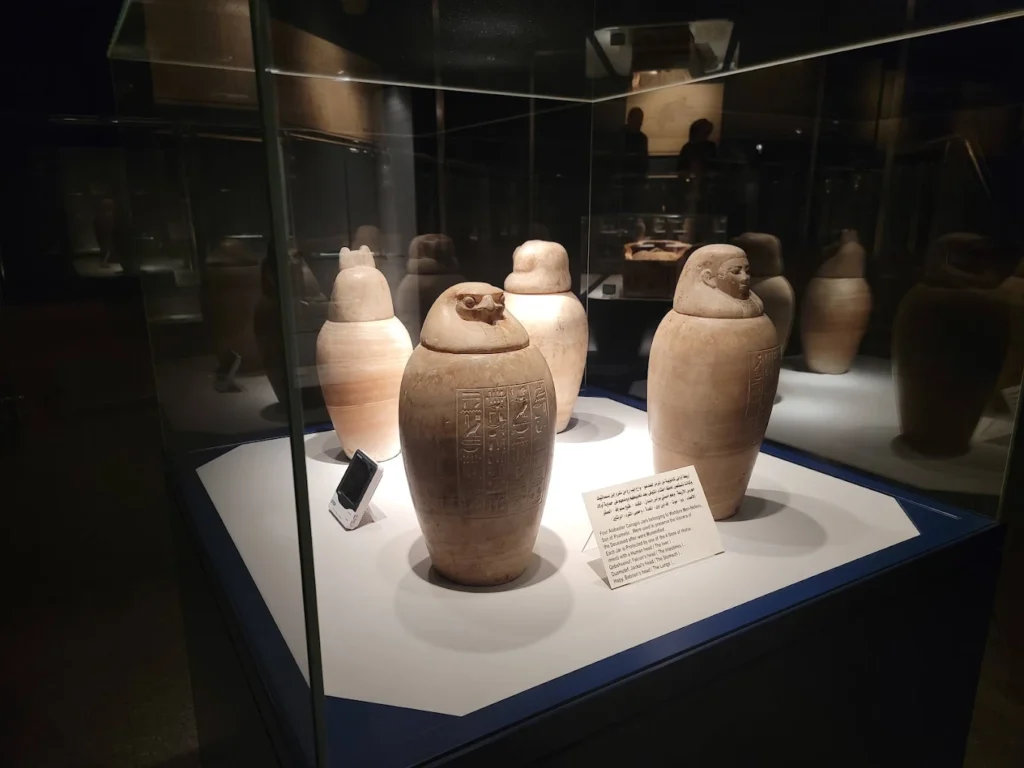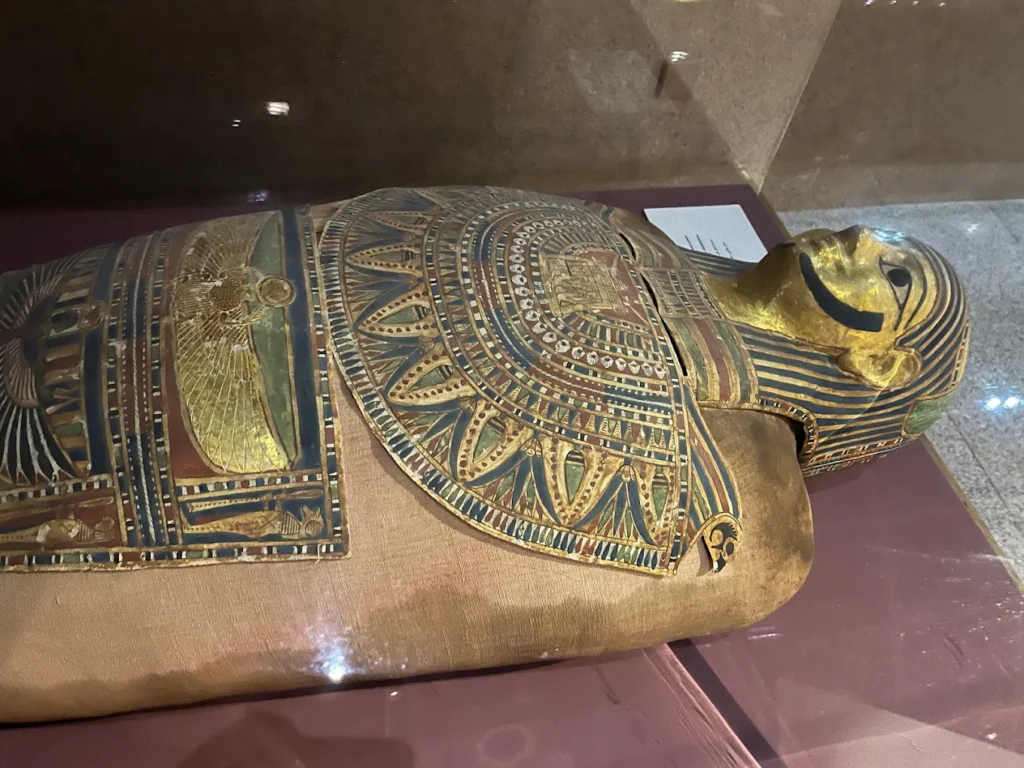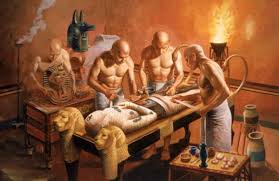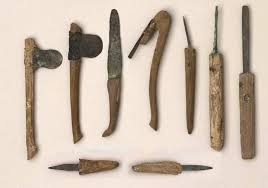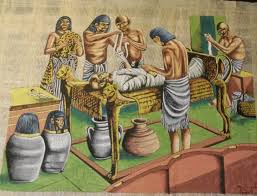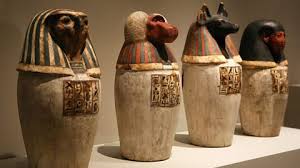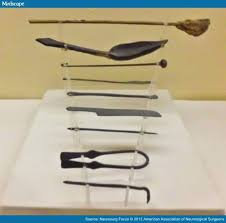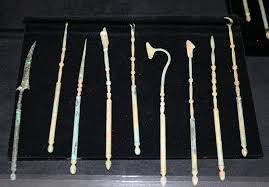Death as a Gateway to Eternity
The Art of Mummification in Ancient Egypt – Secrets of Eternal Life
The ancient Egyptians believed that death was not the end, but a gateway to eternity. For them, preserving the body was a sacred science, an art guided by religion, magic, and deep knowledge of nature. Without a preserved body, the soul could not recognize its earthly form in the afterlife, and the eternal journey would be lost.
The Sacred Process of Mummification
The ritual of mummification usually lasted 70 days, during which the body was carefully purified and protected. The deceased was first laid in natron salt, a naturally occurring substance in Egypt, which acted as a powerful desiccant. For weeks, natron absorbed every drop of moisture, ensuring that the body remained dry and immune to decay.
Afterwards, skilled embalmers anointed the body with resins, oils, and aromatic herbs, not only to protect the flesh but also to sanctify it. Linen wrappings were applied layer by layer, with protective amulets placed between the folds. Each step was accompanied by prayers, incantations, and rituals invoking the gods of protection.
The Purpose: A Body for the Soul
The ultimate purpose of mummification was to keep the body intact so the soul (ba and ka) could return and recognize it once more. Without this reunion, there could be no resurrection, no eternal life.
This is why the Egyptians crafted funerary masks and anthropoid coffins (coffins shaped like human figures), each designed to preserve the likeness of the deceased. Stone sarcophagi were also carved with lifelike features of the dead, ensuring that even if the body were damaged, the soul would still be able to identify its earthly form and rejoin it in the afterlife.
The Mystery of the Word “Mummy”
Interestingly, the very word “mummy” does not come from ancient Egypt itself. In the 13th century and later, scholars used the term from the Arabic “mūmiyā”, meaning bitumen or asphalt.
This was because early explorers found traces of black, bitumen-like substances on some mummies and assumed that asphalt had been used in the process. In reality, embalmers employed a mixture of resins, myrrh, and sometimes bitumen, which helped in drying, sealing, and preventing the flesh from decaying.
Science, Faith, and Eternal Life
Mummification was not merely a physical process; it was a spiritual safeguard, the ultimate key to eternal life. It united science, religion, and magic into one sacred ritual. Every preserved body was a promise that the deceased would “live again” in the world beyond, walking among the gods and joining the stars.
Mummification in Ancient Egypt: A Complete Ritual
Religious Foundations
The practice of mummification in Ancient Egypt was not merely a scientific procedure but a deeply religious act rooted in the Egyptian concept of the afterlife. Egyptians believed that the Ka (spirit) needed a preserved body to recognize and return to after death.
The journey of the deceased began with grand funerary rituals: the body was transported from the east bank (land of the living) to the west bank (land of the dead) across the Nile by boat.
This funeral procession included:
Priests, mourning women, relatives, and friends.
Attendants carrying offerings.
Hymns, sacred rites, and rituals to prepare the soul for eternity.
Scientific Steps of Mummification
1. Purification and Opening of the Body
The body was washed with palm wine and Nile water.
An incision was made on the left side of the abdomen to remove the internal organs.
2. Use of Canopic Jars
The vital organs were carefully embalmed and placed in four Canopic jars, each protected by a deity known as the Four Sons of Horus:
Imsety (human-headed) – protector of the liver.
Hapy (baboon-headed) – protector of the lungs.
Duamutef (jackal-headed) – protector of the stomach.
Qebehsenuef (falcon-headed) – protector of the intestines.
3. Dehydration with Natron
The body was completely covered in natron salt for 40 days, absorbing moisture until the body was fully dried.
The full cycle of embalming and rituals took 70 days, a sacred number in Egyptian belief.
4. Wrapping and Protection
Priests wrapped the body in layers of fine linen.
Amulets and spells were placed between the layers for protection.
Resin and oils glued the wrappings and preserved flexibility.
5. Final Burial Rituals
After mummification, the deceased was placed in a decorated coffin and sarcophagus.
Priests performed the “Opening of the Mouth” ritual, allowing the spirit to eat, drink, and speak in the afterlife.
Preparing the Tomb
Mummification was not only about the body — the tomb had to be ready in advance. For kings, tomb construction began at the start of their reign.
Tombs were decorated with sacred texts like the Book of the Dead.
Funerary goods — food, jewelry, and shabti figurines — were placed to serve the deceased in the afterlife.
By the time the 70-day mummification was completed, the tomb was ready for burial.
Where to See the Evidence Today
Travelers can still witness the legacy of mummification in several remarkable sites:
Valley of the Kings (Luxor) – Royal tombs where beautifully preserved mummies were discovered.
Luxor Museum – Showcases artifacts related to burial traditions and funerary art.
The Mummification Museum (Luxor) – A specialized museum displaying embalming tools, canopic jars, amulets, and animal mummies.
The Egyptian Museum in Cairo – Home to the Royal Mummies Room, featuring Ramses II, Seti I, and other legendary rulers.
Conclusion: Preserving Eternity
The art of mummification in Ancient Egypt was more than the preservation of flesh — it was the preservation of eternity. From the mournful journey across the Nile to the 70 days of ritual preservation and the grand burial in prepared tombs, every detail was designed to ensure immortality.
Today, with Luxury Nile Tours, you can explore this fascinating heritage in person. Visit the Mummification Museum in Luxor, step inside the Valley of the Kings, or marvel at the royal mummies in Cairo. Discover how this ancient civilization honored its dead — and prepared them for life everlasting.

